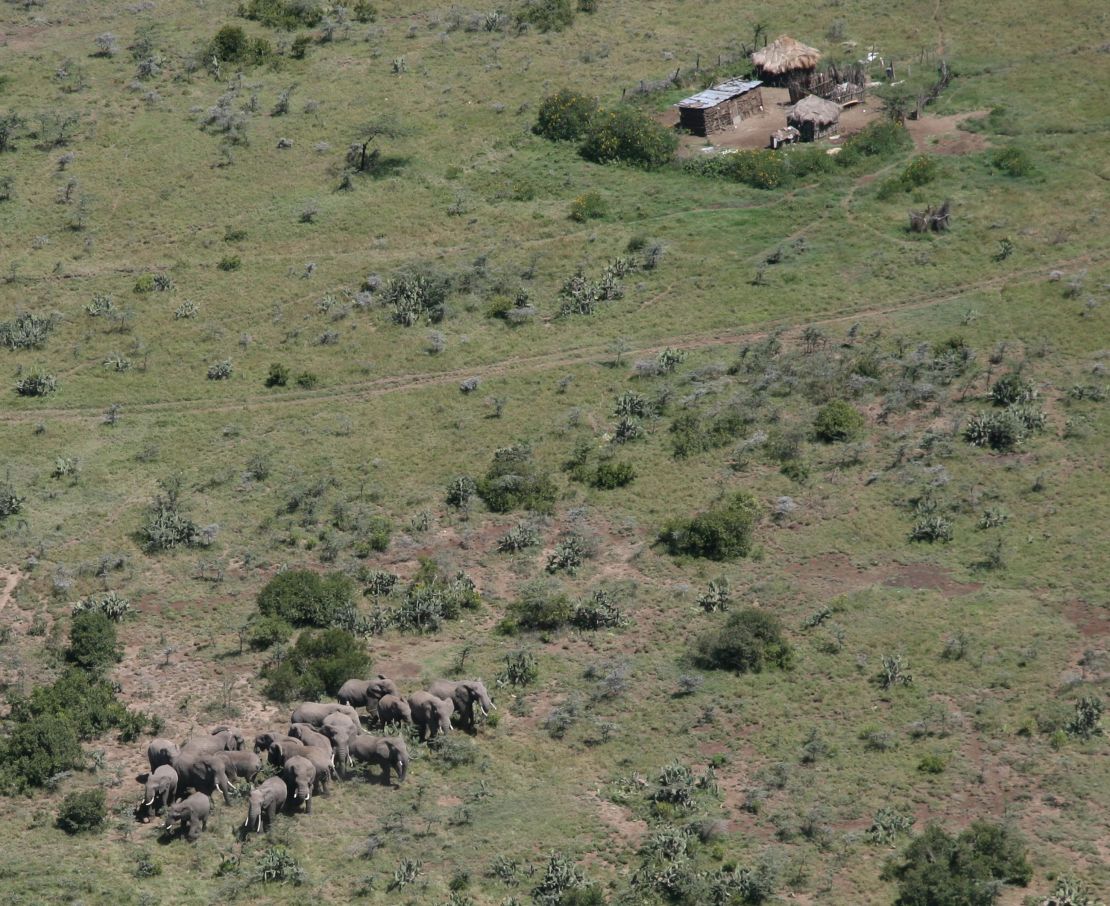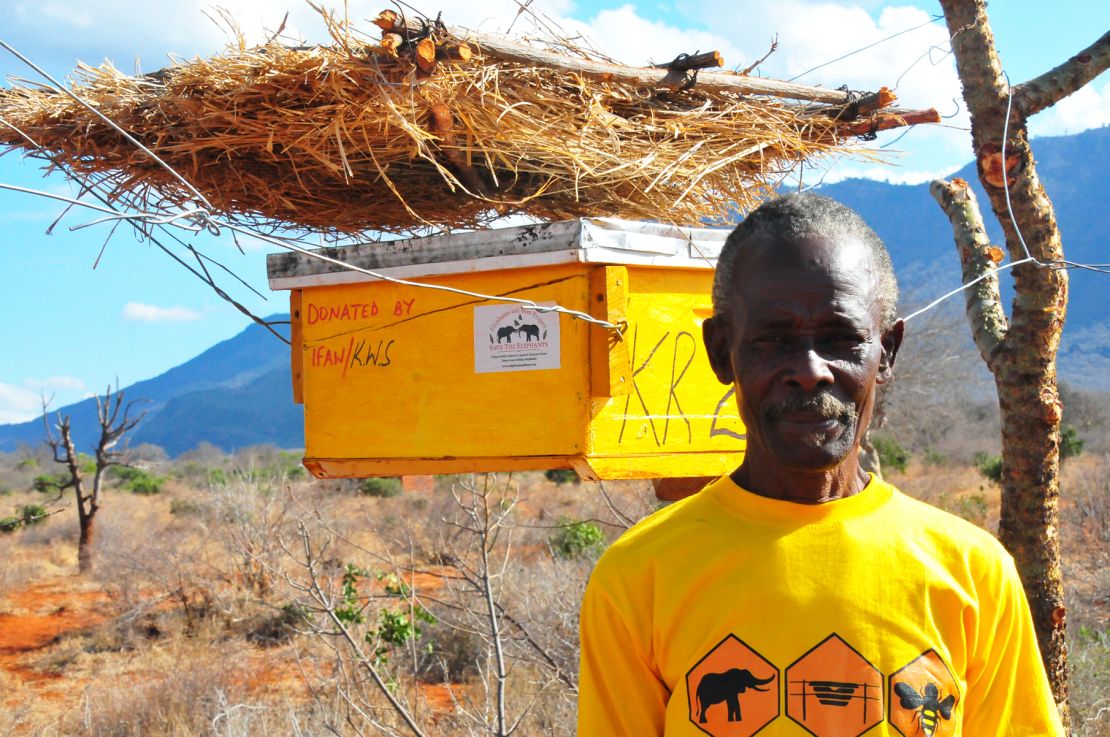Story highlights
Crops are eaten and trampled by elephants, with farmers sometimes taking deadly action
Beehive fences prevent elephants from entering farmland
Solution used in 11 African nations and being exported to Asia
Elephants are a big issue for farmers in parts of Africa – but whether they want to or not, the two are going to have to learn to live together.
A population boom on the continent calls for an increase in resources, and farmers are expanding to accommodate mouths to feed. Occasionally farmers have settled on natural migration corridors for African elephants, giving birth to a fractious relationship.
Standing in the way of herds are fields of maize, beans, peas and cassava, often trampled and eaten by elephants. It endangers the livelihoods of farmers and the lives of the giant mammals, who have been shot or poisoned in return.
But an environmentalist has come up with an ingenious solution that might just save both parties: the African honeybee.
Sting in the tail
Founded on the doctoral research of Oxford DPhil Lucy King, the Elephants and Bees Project, part of Save the Elephants, utilizes the knowledge that the world’s largest land animal is extremely averse to bees. They have good reason to, argues King.
“Talking to local herdsmen and ranchers during my initial study up in northern Kenya, I collated many anecdotal stories of elephants breaking open wild beehives as they foraged in Acacia trees, and the bees coming out and stinging the elephant up the trunk, around the eyes and in the mouth,” she recalls.

Further evidence collated by King proved elephants “will avoid live beehives at all costs.” In fact, she found 94% of elephants in her study moved away from the source of bee sounds within 80 seconds.
But how do you weaponize the African honeybee?
Answer: Build a beehive fence.
“A beehive fence is made up of interlinked beehives and ‘dummy’ beehives hung 10 meters (33 feet) apart and interlinked with a plain piece of fencing wire that, if disturbed, causes the whole fence to swing and release the bees,” King explains.
She describes the bees as “natural electricity” and an extremely cost-effective solution when compared to the charged wire alternative. About 12 to 15 hives can surround about 1.5 to 2 acres of farmland, with King reporting an 80% success rate.

In this instance, elephants’ long memories serves farmers well.
“Elephants can identify bees by sound alone, indicating that they may associate the sound with a negative historic event,” says King. In return “elephants emit a low frequency, infrasonic rumble in response to disturbed bees sounds that warns other elephants in the area to retreat.”
Read: The quest to save the world’s biggest fish
“Once they learn that there is an active beehive in a tree or on some posts around a farm, we suspect that they remember that local threat and will avoid it in the future.”
Secondary benefits
It’s a solution preferable to the desperate measures previously employed by farmers, including firecrackers, fire balls, dogs, stones, spears and guns, King reports. Not only does it help protect crops, she says, but trees, water pipes and tanks and grain stores that elephants have attacked before.
Read: How big dogs are helping out big cats
The beehives also offer myriad secondary benefits.
“There is some evidence that a healthy bee population can have as much as a 15-30% increase in farm crop production,” says King.

Rural Kenyans are no strangers to beekeeping, and honey, wax, royal jelly, propolis and pollen are all harvested, boosting the income of farmers by as much as 50%. In 2015, 500 jars of honey were made from King’s study site in Tsavo East National Park, Kenya, and 2016’s yield could be even higher.
There’s plans to expand the project into one more community in Taita-Taveta, bordering Tsavo, and the study site in the national park is being used to educate and train others to create their own beehive fences.
“We are a very open source about our data, photos, manuals and advice,” says King. “Now we are starting to see beehive fence projects pop up in over 11 countries, with more on their way.”
With trials in India, Sri Lanka and Thailand, it remains to be seen whether the Asian elephant will be quite as averse as their African cousins.












